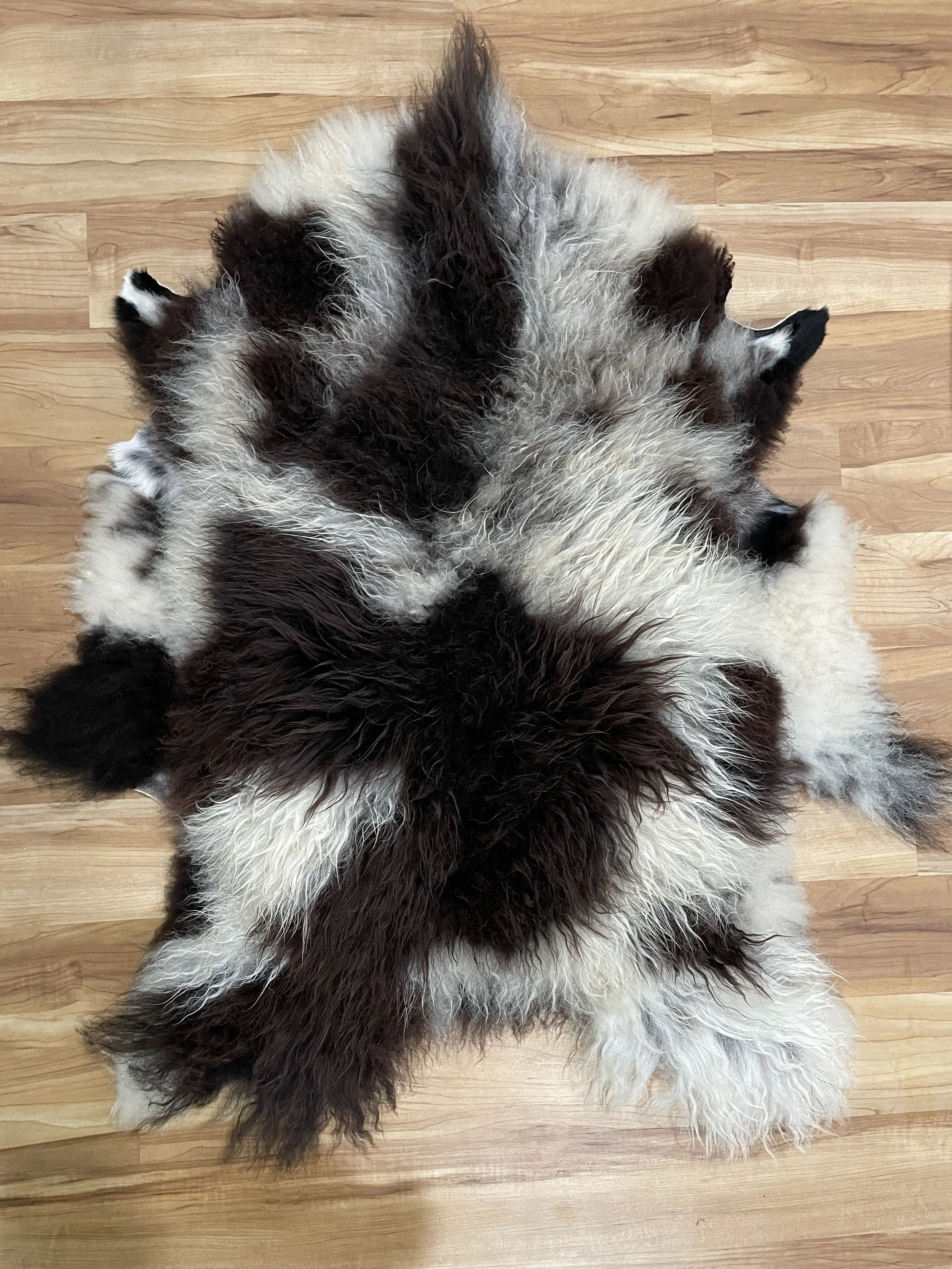
Tanning services focused on stewardship, sustainability & craft. Creating beautiful products you can feel good about.
Our Fees
FAQs
-
We measure hides in their raw form (as we receive them) from the top of the neck down to the rump. After tanning, all hides are typically stretched as they dry in order to maintain a similar size, however some shrinkage does occur.
-
We strive to craft a premium product that honors the animal, farmer and land and want to support you in marketing your hard work. We have several resources available for this:
— We have simple marketing brochures which are included with the hides when they are shipped back to you. These highlight the value of the Stewards tanning process.
— For a small additional fee we can include small leather tags (typically tanned from the belly of the sheepskin) which include a simple label that you can fill in with price, sheep breed and farm. This also include a QR code that links to our process for those who are interested.
— For repeat customers or large orders, we are happy to discuss making joint marketing materials that highlight your process and ours as a continuous stewarding process that benefits farmer, community and environment.
-
Your sheepskin is naturally good at resisting dust, dirt and liquids due to the characteristics of wool fiber. For regular care of your sheepskin, we recommend gentle cleaning methods such as:
— bringing your sheepskin outside and giving it some good shakes
— vacuuming with just the suction nozzle
— spot cleaning by gently blotting with a damp cloth. A small amount of mild sheepskin cleaner such as those made by Unicorn, Eucalan, Woolskin or Kookaburra can be used on the cloth. Rub/scrub as little as possible as wool felting can occur.
Your veg-tanned sheepskin is machine washable if heavily soiled. We recommend using the delicates cycle with cold water and low spin speed along with a wool detergent such as Unicorn Fibre Wash, Eucalan, Kookabura or Woolskin. To improve the softness of the wool, add ¼ cup vinegar or 1 tbpn Unicorn Fibre Rinse to the fabric softener tray to help condition the wool. To dry your sheepskin, hang it outside on a line or draped over a clean wooden dowel on a windy day. When the back (leather) is nearly dry (feels just slightly cool to the touch) you can pull and stretch the skin periodically as it finishes drying in order to have the leather dry softer and more flexible.
-
Learn more about the Stewards Provisions Tannery here
-
We require an initial $30/hide to begin work. This can be paid via check, cash or on our website. Final invoicing will occur upon completion and prior to shipping. This can be paid via the invoice sent to you, by cash or by check.
-
We prefer vegetable tanning your product. This process is more in line with our values of environmental stewardship, produces a beautiful and supple leather backing and is more forgiving of wetting during the inevitable spills and cleanup that busy life entails than alum tawing. The type of vegetable tannin used depends on the hide but we typically use mimosa or sumac for several reasons. We are working to grow or source sumac for tanning locally in Michigan. Due to the time, expense and limited availibility of local sumac, we primarily tan with mimosa.
-
Just like farming, tanning is a natural process with variations which reflect the life of the animal. You can review of shop listings to see examples of what some hides look like and as we develop our social media presence you will also be able to see some of the hides from other farms.
When you send your hide to us you take on a level of risk that comes with natural processes. Some of the outcome depends on the product coming into the tannery (vegetable matter, remaining flesh or holes in the hide from butchery, etc…). If we have concerns about the hide coming in, we will contact you immediately to discuss options. Stewardship is a key value for us, so finding ways to utilize a hide in an economically beneficial way is one of our top priorities.
-
We’d love the chance to discuss your individual situation before you even process your hides. Very often, we are able to work with processors and farmers to get hides fresh or frozen to avoid your time in fleshing and the added salt to the waste stream. Please reach out sooner rather than later to see if this is possible.
If you are shipping, we recommend that you use a semi-sharp knife or your hands to remove all fat or meat that is greater than 1/8 inch thick from the sheepskin within several hours of it being skinned. It is very important to remove all thick chunks of fat, as the salt cannot penetrate these and can cause wool slippage and irregular uptake of the tannin. Then, place the hide flesh side up on a slight incline (wood or plastic pallets are great) and sprinkle 3-5 lbs of fine non-iodized salt onto the flesh side, rubbing in to fully cover it. As the salt pulls liquid out of the hide, make sure that no pooling occurs. We often find that after 3-5 days it is beneficial to rub the salt across the flesh side to break up chunks and make sure there is still good salt to flesh contact. Ideally the hide should salt dry (cure) to the point of being stiff. At this point you can fold it up, place it in a plastic bag and ship it to us.


